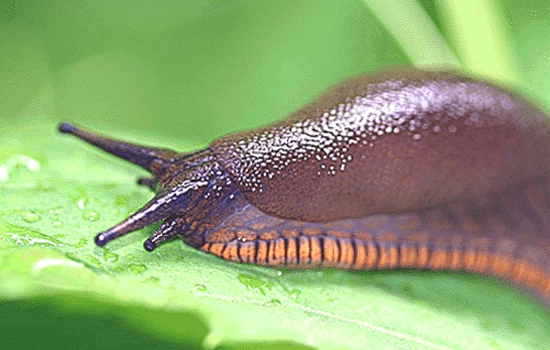How to Control Against Slugs & Snails
Slugs and Snails are enemy number one and two in the vegetable garden. This is especially the case if you are growing big leafy plants such as the Brassicas, Cabbage, Cauliflower, Lettuce or Rhubarb. Slugs really seem to love munching down in these juicy plants and are the main reason why many a cabbage plant ends up on the compost heap.

In our damp weather the slugs can really thrive as their wet slimy bodies need moist conditions to survive, breath and move about. A mild winter can also lead to large numbers of slugs the following spring as many slugs can survive these clement winter months. If however we have a severely cold winter the one silver lining would be that slug numbers the following spring should be severely diminished.
How to Spot Slugs
As these are nocturnal creatures your best bet is to go slug spotting a night – often gardeners go out with a torch to find and remove slugs from plants.
During the day the best way to recognize slugs is the damage that they cause – it's generally hard to miss.
Foliage: You may notice irregular holes with smooth edges on the foliage. These holes can be found on the centre or edge of the leaves. The leaf midrib is sometimes left untouched.
Surrounding the Plant: Look out for the tell tale slimy trails left by slugs.
How to Control Against Slugs
There are so many different products, chemicals and old wives tales about how best to control against slugs. Here are the best and most common ones.
Physical Control Options:
Slug Traps – These can be used to entice slugs away from crops & into their watery / beery death.
Slug Barriers – Sharp edges prove to be a difficult obstacle for slugs, use galvanized sheets to form a barrier around your crops.
Wool Pellets - Natural & safe control against slugs & snails. Pellets should be placed in a ring around crops. They expand when wet to form a barrier to slugs & snails
Cloches / Polytunnels – These products act as both frost & pest control, but limited benefit when it comes to controlling slugs.
Sand, Grit, Coarse Hair, Dried Egg Shells, Old Ashes, Ground Coffee, Salt – These are just some of the ways to build barriers around your crops to keep slugs out. Of these, egg shells would be the most effective but can be time consuming to clean out & dry prior to use.
Copper Wire or Tape – These products can be expensive due to the price of copper but are an effective barrier.
Hand picking: Possibly the most gross way to control slugs but quite effective – no chemicals required and no damage to the plant, the soil or the environment. But you might be surprised by the number of slugs in your garden! Yuck!
Chemical Control Options
Slug Pellets – Come in the organic ferric phosphate form or in the more harmful metaldehyde form which is harmful to pets and aquatic life.
Biological Control Options
The Parasitic Nematode - Phasmarhabditis hermaphrodita can be used to control and prevent slug infestations.
These tiny micro organisms can be added to the soil where they will multiply and kill soil borne slugs.
Birds, Hedgehogs, Ground Beetles and Chickens - Also eat and help to control slug levels in garden.





